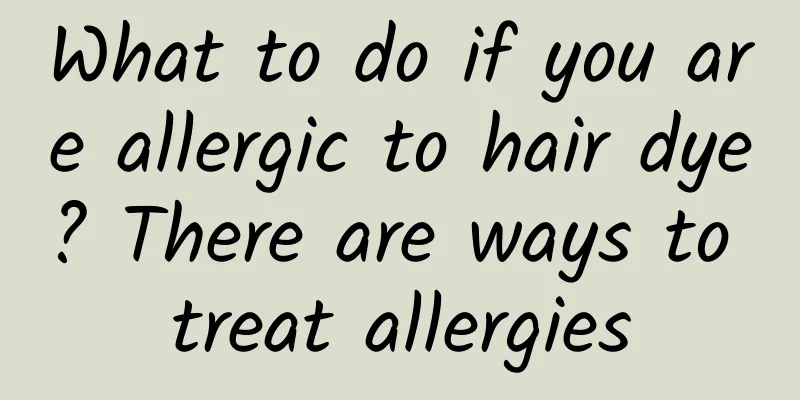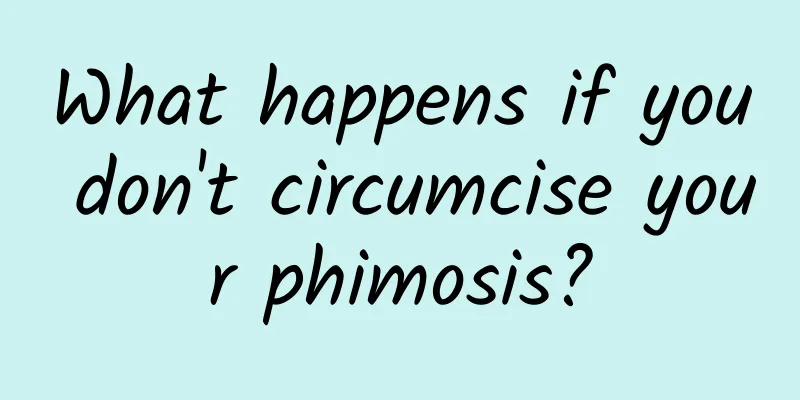What to do if you are allergic to hair dye? There are ways to treat allergies

|
Young people nowadays often pursue a more youthful, fashionable and beautiful appearance. At this time, they will choose to dye their hair to make themselves look more attractive. However, some people will experience symptoms such as itchy scalp and red and swollen skin afterward, which is an allergic reaction. What should I do if I have skin allergies caused by hair dyeing? 1: Solutions for hair dye allergies1: Some people may have allergic reactions after dyeing their hair, such as redness of the skin, puffy eyelids, itchy rashes on the scalp, etc. Therefore, those who dye their hair for the first time must do an allergy test in advance, and give up dyeing immediately if they find that they are allergic! 2: Step 1: Wash the remaining hair dye. If your scalp is itchy after dyeing your hair, it is recommended to wash your hair with warm water immediately. When rubbing your hair, be gentle to avoid scratching your scalp and giving the hair dye a chance to invade your scalp. This is to remove as much hair dye as possible from the scalp and reduce allergic symptoms. 3: Take anti-allergic drugs. If your scalp is still itchy and your skin becomes red after washing your hair, you need to see a doctor immediately and take anti-allergic drugs under the doctor's guidance. 2: Relieve allergies1: White vinegar anti-itching method formula: dilute white vinegar and warm water in a ratio of 1:10. Steps: 1. Wash your hair with warm water (do not use shampoo), massage your scalp for 5-10 minutes, and then comb your hair; 2. Soak your hair in diluted white vinegar, then wrap it with a hot towel for 3 minutes to allow the white vinegar to fully sterilize. 3. Use a mild shampoo and conditioner to wash off the remaining white vinegar. Remember not to use strong anti-dandruff and degreasing shampoo to avoid too much sebum loss. 4. After rinsing your hair with clean water, wipe your hair dry with a towel until it is no longer dripping, apply an appropriate amount of leave-in conditioner to the ends of your hair, and then let it dry naturally. Efficacy: Washing your hair with vinegar can kill the Pityrosporum ovale on the scalp of patients with seborrheic dermatitis, thereby relieving itching and removing dandruff. The main function of conditioner is to prevent dry and split hair. 2: Ginger anti-itching method Recipe: Ginger (5-7 slices), salt Steps: 1. Slice the ginger and put it in about 1000ml of water and boil it; 2. Add a small spoonful of salt and cool it to about 40°C 3. When the ginger water is cooled, wash your scalp first to prevent the dust and oil on the scalp from blocking the ginger water from penetrating into the scalp. 4. While massaging, soak your hair with ginger water. Massage can promote blood circulation in the scalp, promote ginger to enter the scalp, and play a sterilizing and anti-itching effect. 5. After massaging for 10 minutes, wash off the ginger water left on the hair. Three: Preventive measures1: ① Before dyeing your hair, you should carefully choose the type of hair dye. It is best to use the hair dye to do a skin patch test first to determine whether there is a possibility of allergic reaction. If you have an allergic constitution, it is best not to dye your hair; 2: ② Do not dye your hair frequently. When dyeing your hair, do not let the dye stay on your hair for too long. Rinse your hair several times with clean water after dyeing. Do not use dye to dye your eyelashes, eyebrows, etc. Do not dye your hair when there are wounds on your scalp. 4: Skin allergy caused by hair dye is contactA type of inflammation, hair dye allergy symptoms include redness, swelling, itching, and rashes on the head, limbs, etc., and in severe cases, anaphylactic shock may occur, which is life-threatening. This is because there is a chemical called "p-phenylenediamine" in the hair dye ingredients, which can easily cause skin allergies in the human body, such as itching of the skin at the contact site, erythema, papules, and even blisters, redness, swelling, pain, exudation and other skin allergy symptoms. |
>>: What to do if you have skin allergies due to climate change?
Recommend
What is the reason for premature graying of hair in boys?
Premature graying of hair is quite common in life...
How to confirm a relationship, a guide to successful love
When two people gradually change from strangers t...
How to treat seminal vesiculitis?
Seminal vesiculitis has a great impact on men'...
How to treat epididymitis? Why not try Chinese medicine?
Epididymitis is a male disease. The reason why ma...
Three routine examination items for renal insufficiency
For most middle-aged men, keeping their kidneys h...
Weight and height standard table for boys
Both men and women want to have a healthy body sh...
How to recover from frequent nocturnal emission?
Semen is a kind of reproductive cell produced by ...
Male genitalia diagram
The male testicle is the location of the male pro...
What's wrong with the yellow beard?
Beards, like hair and pubic hair, are normal hair...
What happens if a man frequently ejaculates outside the body?
If some men do not want their wives to get pregna...
Is your semen transparent and thin? You may have these diseases
Prostatitis xt-indent: 2em; text-align: left;"...
What are the causes of male bloating?
Many men have bloated bellies. If this condition ...
Kidney deficiency and water retention symptoms of prostatitis
There are many causes of prostatitis. From the pe...
What causes a man's stomach to feel cold?
A cold stomach is a problem that many people are ...
The harm of spleen deficiency in men
The specific manifestations of spleen deficiency ...









